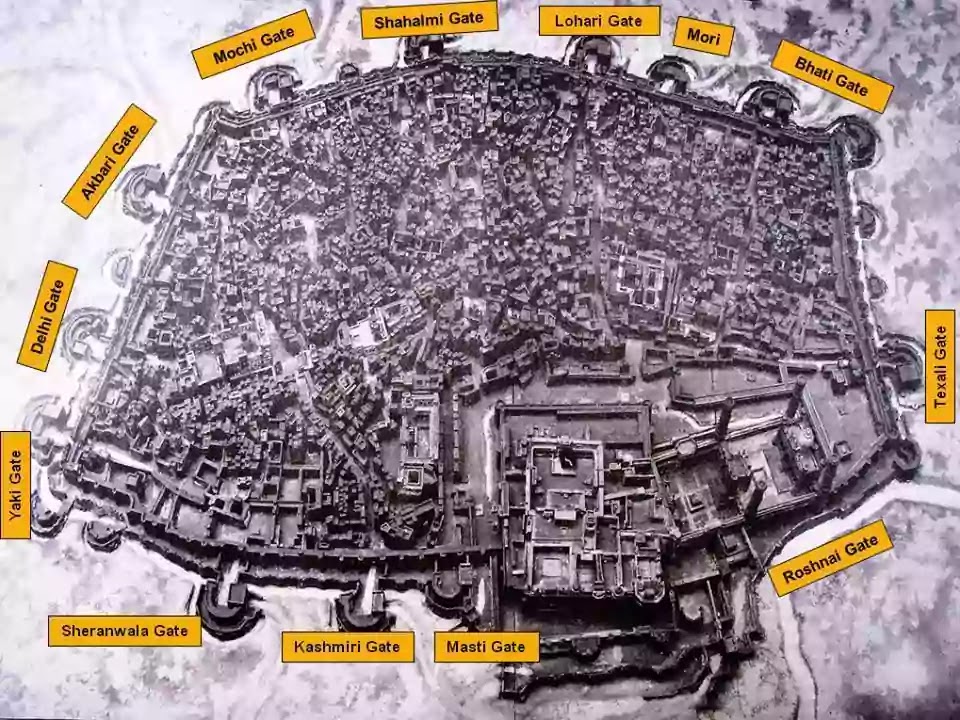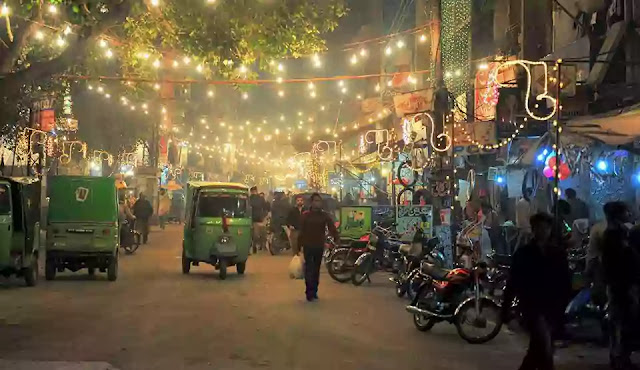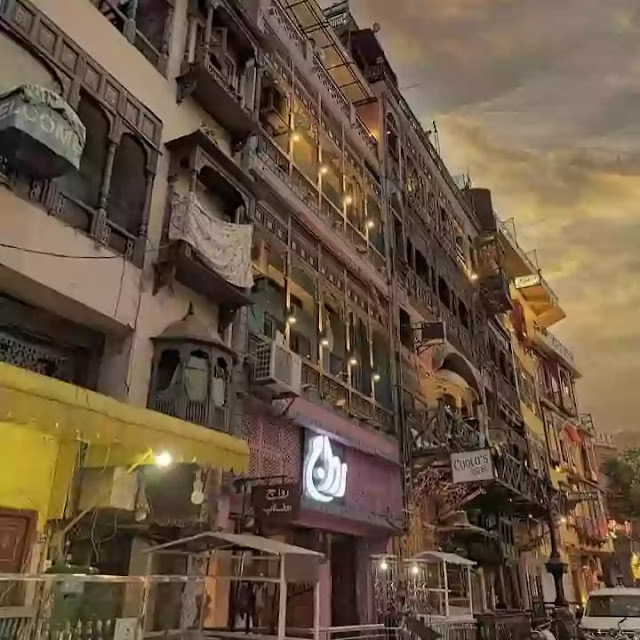Gates of Lahore plays a major role in the popularity of inner city, known as the walled city of Lahore. It is a glimpse of the Mughal era that showcases the historical and ancient culture, tradition, and lifestyle of people living for a long time.
13 Gates of Lahore | Walled City Gates
The old city or the Mughal period is also called the walled city of Lahore. This area is the highlight of Lahore where we find several historical moments, multi-storied houses, Havelis (mansions), colorful bazaars, and alleys. The vibrant culture of the walled city makes it the busiest and bustling part of Lahore.
The city was walled by Mughal Emperor Akbar during the 16th century and different gates were constructed for entry and exit purposes. Few gates still survive to give an idea of that period's architecture and living style.

Lahore is the capital of Punjab province, is the 2nd largest city in Pakistan. The city has an old history, legendary location, and multi-dimensional culture. Lahore is famous as the city of gardens, the city of historical monuments as well as the cultural hub of Not only Pakistan but the subcontinent.
When people of Lahore want to emphasize the uniqueness of Lahore, they say 'Lahore is Lahore' (Lahore, Lahore Aey).
Walled city gates name list
There are 13 gates in the walled city of Lahore and each has distinguished and unique reasons for its name and popularity.
- Bhatti Gate
- Lahori Gate
- Mori Gate
- Shah Alami Gate
- Mochi Gate
- Akbari Gate
- Dehli Gate
- Yakki Gate
- Sheranawala Gate
- Kashmiri Gate
- Masti Gate
- Roshnai Gate
- Texali Gate
See also:
Delicious Desi (local) foods of Lahore
Bhatti Gate Lahore
Bhati Gate is the most popular gate of old Lahore and is located on the western side of the walled city. The gate is named after the ancient Rajput tribe 'Bhatti' who was settled in the area during the period of Malik Ayyaz.
The gate is also an important transport hub of the city. Opposite to Bhatti Gate has located the Shrine of 11th century Saint Ali Hajweri, locally known as 'Data Ganj Bakhsh'.
Lahori Gate Lahore
Being one of the oldest gates of the walled city Lahori Gate is also known as the Lohari Gate. The gate faces the well-known Anarkali Bazaar and later settlements of Lahore, so named as Lahori Gate. Also due to the existence of Lohari Mandi or the quarters of 'Lohars' (Black-Smiths), the gate is named Lohari Gate.
Mori Gate Lahore
Mori Gate is the smallest of the walled city gates. The gate was used as an outlet for the removal of waste and disposables from the walled city. Mori Gate was never considered an official gate, but the residents of Lahore considered it to be the 13th gate.
Shah Alami Gate Lahore
The gate is named after Shah Aalam, one of the sons of Mughal Emperor Aurangzeb. The gate was burnt during the 1947 independence riots, and later opposite to the gate site, the famous 'One Night Mosque' (locally Masjid Shab Bhar) was built that has a notable mention in Iqbal's poetry.
One of the cheapest markets or commercial areas of Lahore the Shah Aalam Market (commonly called Shahalami) is located inside the gate site.
Mochi Gate Lahore
This gate was originally called Moti Gate, named after a noble of the Mughal era, but later when it became a quarter of cobblers, it came to be called Mochi (Cobbler) Gate. The Bazaar around this gate is renowned for shops of dry fruit and sweets.
Akbari Gate Lahore
Named after the Mughal Emperor Akbar, this gate is famous for the wholesale market of groceries and eatables. During British rule, the gate was officially named Aitchison Gate but the old name has persisted.
Dehli Gate
The gate is named so because it faces Dehli city and was used for Shahi Guzergah (Royal Route) in old days. It has been well restored and gives access to the Royal Bath (Shahi Hammam) and the beautiful Wazir Khan's Mosque which is famous for its antique architecture.
Yakki Gate Lahore
The gate was originally called after the name of martyr saint 'Zakki' whose shrine is also situated inside.
Pir Zakki was martyred while guarding the gate during the Slave dynasty in a war against Mongol invaders. Later, the gate was named Yakki Gate because a Yakka stand was sited here.
Sheranawala Gate Lahore
This gate was originally called Khizri Gate, named after the patron saint of running waters, as it faced the river Ravi flowing close to the city at that time. Later, Ranjit Singh placed two stone lions here and the gate came to be known as Sheranawala (Lion's) Gate.
Kashmiri Gate Lahore
The gate is named so because inside the gate the area was populated by Kashmiris. Another version of history says that the gate faced Kashmir also.
The gate leads to Kashmiri Bazaar and a girls' college which was originally an impressively structured haveli (mansion) of the Mughal nobleman Asif Jah.
Moreover, the tomb of Asif Jah is also located in Lahore.
Masti Gate Lahore
This gate is closer to the eastern gate of Lahore fort. 'Masti' is a corrupted form of Masjadi gate and named so due to Maryam Zamani mosque of Mughal period that is situated closer to the gate site.
Roshnai Gate Lahore
This gate was the main entry point for rulers and caravans coming from the northern side. To facilitate travelers, this huge gate was lit up at night, so called Roshnai Darwaza or Gate of Lights.
Taxali Gate Lahore
This gate is named because of an old royal mint (Taxal) located in its vicinity. Besides a shoe market and shops for musical instruments, inside Taxali is known for some traditional and tasty food items like Nehari and Paey.
The area was also got famous for dancing and courtesans in previous eras. Also, find here some attractive decorated Bughees (horse carriages) hired for weddings and special events.
Walled city pictures







Conclusion
The 13 gates of Lahore have become historically important as well as the identity of the inner city, considering the importance of which the walled city Authority has rendered invaluable services for the preservation and promotion of tourism here in the Walled city of Lahore.
